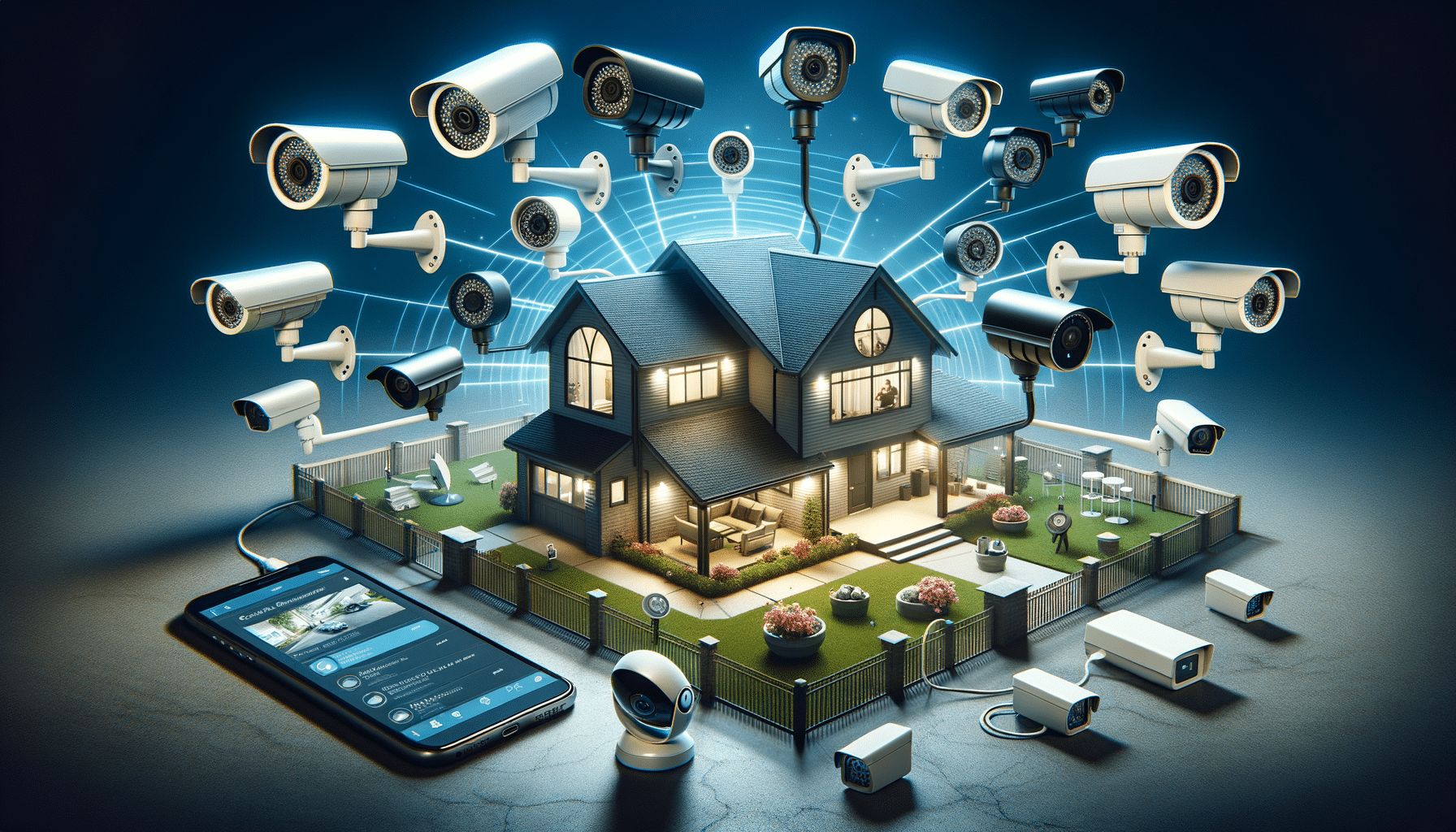
Amazing Home Security Cameras in the U.S
Introduction to Home Security Cameras
In today’s fast-paced world, ensuring the safety of our homes has become increasingly important. Home security cameras play a vital role in providing peace of mind by allowing homeowners to monitor their properties remotely. These devices have evolved significantly over the years, offering a range of features that cater to different security needs. Understanding the basics of home security cameras can help you make informed decisions when choosing the right system for your home.
Home security cameras are designed to capture and record video footage of specific areas in and around your home. They can be used to deter potential intruders, monitor daily activities, and provide evidence in case of incidents. With advancements in technology, modern security cameras offer features such as high-definition video quality, night vision, motion detection, and even two-way communication.
Installing a security camera system can seem daunting, but with the right information, it becomes a manageable task. In this article, we will explore how to view a security camera from anywhere, and key considerations before installing a security camera at home.
How to View a Security Camera From Anywhere
One of the most appealing features of modern home security cameras is the ability to view live footage from anywhere in the world. This remote access is made possible through internet connectivity, allowing homeowners to stay connected to their properties at all times. Here are some key steps and considerations when setting up remote viewing for your security cameras:
- Internet Connection: Ensure that your security camera system is connected to a reliable internet source. A stable connection is crucial for uninterrupted remote access.
- Mobile Apps: Most security camera manufacturers offer mobile applications that can be downloaded to smartphones or tablets. These apps provide a user-friendly interface to access live feeds, review recorded footage, and receive alerts.
- Cloud Storage: Some systems offer cloud storage options, allowing you to save and access video recordings remotely. This feature is particularly useful for reviewing past events when you’re away from home.
- Account Security: Protect your remote access by setting strong passwords and enabling two-factor authentication. This ensures that only authorized users can view your camera feeds.
By following these steps, you can effectively monitor your home security cameras from anywhere, providing an added layer of security and convenience.
Key Considerations Before Installing a Security Camera at Home
Before diving into the installation of a home security camera system, it’s essential to consider several factors to ensure you choose the right setup for your needs. Here are some key considerations to keep in mind:
- Camera Type: Decide between wired and wireless cameras. Wired cameras offer a stable connection but may require professional installation, while wireless cameras are easier to install but depend on Wi-Fi connectivity.
- Coverage Area: Determine the areas you want to monitor. Consider the camera’s field of view and whether you need additional cameras to cover blind spots.
- Resolution and Quality: Higher resolution cameras provide clearer images, which can be crucial for identifying faces and details. Consider cameras with at least 1080p resolution for optimal quality.
- Weather Resistance: If you’re installing cameras outdoors, ensure they are weather-resistant and can withstand various environmental conditions.
- Privacy Concerns: Be mindful of privacy laws and regulations in your area. Avoid pointing cameras towards neighbors’ properties or public areas.
Taking these considerations into account will help you choose a security camera system that effectively meets your home security needs.
Installation and Maintenance Tips
Once you’ve selected the right security camera system, proper installation and maintenance are crucial to ensure optimal performance. Here are some tips to guide you through the process:
- Placement: Position cameras at strategic locations such as entry points, driveways, and common areas. Ensure they are mounted at a height that prevents tampering.
- Cable Management: For wired systems, plan the cable routing carefully to avoid exposed wires. Use cable clips or conduits to keep them organized and protected.
- Regular Updates: Keep your camera system’s firmware and software up to date to benefit from the latest security patches and features.
- Routine Checks: Periodically check your cameras for any obstructions, dirt, or damage. Clean lenses and housings to maintain clear video quality.
- Backup Power: Consider installing backup power solutions such as uninterruptible power supplies (UPS) to keep your cameras running during power outages.
Following these tips will help you maintain a reliable and efficient home security camera system.
Conclusion: Enhancing Home Security with Cameras
Home security cameras have become an integral part of modern security systems, offering homeowners peace of mind and control over their properties. By understanding the capabilities of these devices, setting up remote access, and considering key factors before installation, you can create a robust security solution tailored to your needs. Regular maintenance and strategic placement further enhance the effectiveness of your camera system, ensuring your home remains protected at all times.
Whether you’re looking to deter potential intruders, monitor daily activities, or have evidence in case of incidents, home security cameras provide a reliable and convenient way to enhance your home’s security. Embrace the technology and take proactive steps to safeguard your home and loved ones.


